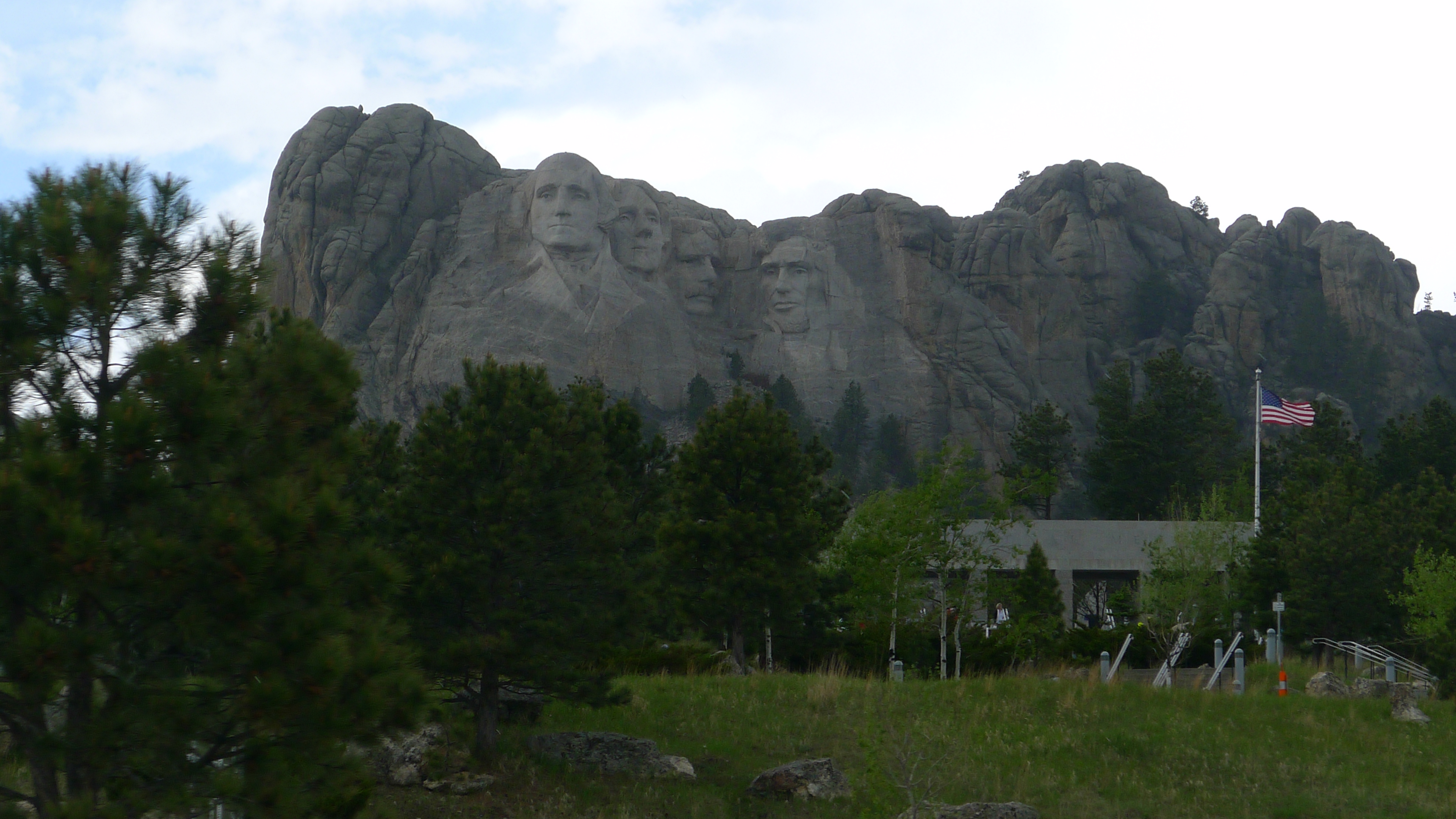“Over the decades, Mount Rushmore has grown in fame as a symbol of America—a symbol of freedom and hope for people from all cultures and backgrounds.” —National Park Service1
In the popular imagination, Mount Rushmore is the United States’ most iconic lawn sculpture, akin more to kitschy roadside attractions like the Giant Ball of Yarn than to noble national memorials. If we recognize in the presidents’ enormous grey mugs America’s debt and devotion to colonialism and capitalism, the “memorial” can still inform us about the “founding, expansion, preservation and unification of the United States.”2 Mount Rushmore’s original purpose was and still is to attract tourists and extract dollars for the state of South Dakota. The fact that the Black Hills, where Mount Rushmore is located, was sacred Lakota Sioux land made little difference in this country’s early enterprise in what is now called creative placemaking.
In 1923, thirty-six years after the US government illegally appropriated the Black Hills from the Sioux Nation, the South Dakota historian Jonah LeRoy “Doane” Robinson invited the sculptor Gutzon Borglum to carve into the hills a “heroic sculpture of unusual character.”3 To Robinson, the local Ponderosa pines and mountain goats weren’t sufficiently attractive: “Tourists soon get fed up on scenery unless it has something of special interest connected with it to make it impressive.”4 Robinson’s original vision projected frontier heroes like Wild Buffalo Bill; Borglum, an Ecole de Beaux Arts graduate, had something more imperial in mind. To add insult to years of injury, the Lakota Sioux sacred lands would be, by force of dynamite, branded with the sixty-foot faces of their occupiers: Washington, Jefferson, Roosevelt, and Lincoln. The mountain formerly known to the Sioux Nation as The Six Grandfathers, would be renamed Mount Rushmore, after a (visiting) lawyer, whose job it was to secure mining options in the Black Hills.
Envelope Architecture + Design, “Proxy” (digital model), 2011. From Douglas Burnham, “Proxy: An Experiment in Flexible Urbanism,” in On Site in the City, part of a series of pamphlets.
Creative placemaking—the leveraging of creative and artistic resources toward local development outcomes—remains a strong priority among artists and art funders. In 2010, the NEA commissioned a white paper from the economic researcher Ann Markusen that analyzed two decades of creative placemaking in America and recommended funding policies for continued investment. Since 2011, Artplace America’s National Creative Placemaking Fund has invested $67 million in 227 placemaking projects across 152 communities in 43 states.5
In recent years, creative placemaking has emerged as an antidote to the dehumanizing effects of increased privatization of urban landscapes and resultant fragmentation of neighborhoods and communities. The infusion of art coupled with a healthy dose of DIY aestheticism has become a strategy that, according to placemaking boosters, can be deployed to mitigate the effects of every imaginable market failure. Richard Florida’s “creative class” theory signaled the mainstreaming of placemaking as an urban renewal scheme. But the durability of placemaking, as well as the hocus-pocus brands of city development that mutated from it (for example, lite forms such as flexible urbanism and tactical urbanism), has proved hollow and only reinforced capitalism’s tendency to create fetishes of new spatial forms.
Justin Chotikul. Untitled, 2016. From Justin Chotikul, “The Healing Power of Arts and Culture: Creative Placemaking in the Tenderloin,” ArtPlace America.
To be fair, funders and artists have taken a more nuanced view of creative placemaking and its role in communities. The Federal Reserve has even stepped in with its senior research associate, Ian Galloway, recommending measuring investment outcomes such as test scores or recidivism rates instead of returns in dollars. Mount Rushmore, as an initiative designed to attract tourists, soared beyond Robinson’s wildest expectations. In 2015, tourism to South Dakota brought in $3.78 billion, supporting a total of $5.9 billion in business sales in the state and contributing $2.4 billion in GDP to the state’s economy.6 These are the kind of statistics one is also likely to see in the Americans for the Arts annual “Creative Industries” report, which provides hyper-local data on the economic impact of the arts. In many places, the arts have been embraced as an instrument of tourism, often funded by transient occupancy taxes; for example, the South Dakota Arts Council is a department of the South Dakota Department of Tourism.
To many municipalities and arts funders, creative placemaking as policy initiative still seems relatively innovative and “change-making.” But one should keep this in mind: the idea that large-scale art projects attract unique, often financial value to a specific community can be traced back to one of our most established and dubious landmarks.
1. National Park Service, “History & Culture,” Mount Rushmore National Memorial.
2. Ibid.
3. United States Department of the Interior, National Park Service, “National Register of Historic Places Inventory—Nomination Form, for Federal Properties.”
4. “The Making of Mount Rushmore,” Smithsonian, October 30, 2011.
5. ArtPlace America, “National Creative Placemaking Fund, Introduction.”
6. Tourism Economics, “The Economic Impact of Tourism in South Dakota, Tourism Satellite Account, Calendar Year 2015.”
